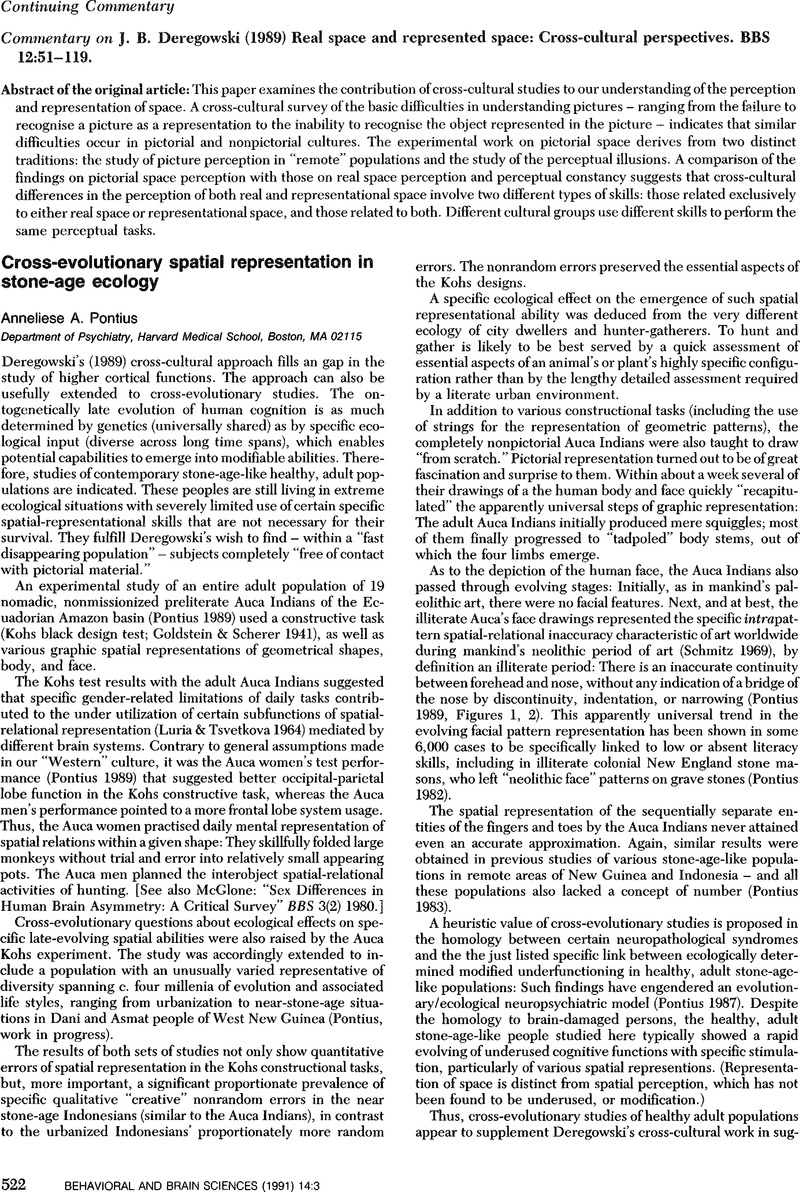Crossref Citations
This article has been cited by the following publications. This list is generated based on data provided by Crossref.
Pontius, Anneliese A.
1993.
Neuroethics vs Neurophysiologically and Neuropsychologically Uninformed Influences in Child-Rearing, Education, Emerging Hunter-Gatherers, and Artificial Intelligence Models of the Brain.
Psychological Reports,
Vol. 72,
Issue. 2,
p.
451.
Pontius, Anneliese A.
1993.
Spatial Representation, Modified by Ecology.
Journal of Cross-Cultural Psychology,
Vol. 24,
Issue. 4,
p.
399.
Pontius, Anneliese A.
1995.
In Similarity Judgments Hunter-Gatherers Prefer Shapes over Spatial Relations in Contrast to Literate Groups.
Perceptual and Motor Skills,
Vol. 81,
Issue. 3,
p.
1027.
Pontius, Anneliese A.
1997.
Impact of literacy training on spatial representation in Southwest Ethiopia.
International Journal of Intercultural Relations,
Vol. 21,
Issue. 3,
p.
299.
FLAHERTY, Mary
2005.
GENDER DIFFERENCES IN MENTAL ROTATION ABILITY IN THREE CULTURES: IRELAND , ECUADOR AND JAPAN.
PSYCHOLOGIA,
Vol. 48,
Issue. 1,
p.
31.
Moè, Angelica
Meneghetti, Chiara
and
Cadinu, Mara
2009.
Women and mental rotation: Incremental theory and spatial strategy use enhance performance.
Personality and Individual Differences,
Vol. 46,
Issue. 2,
p.
187.



